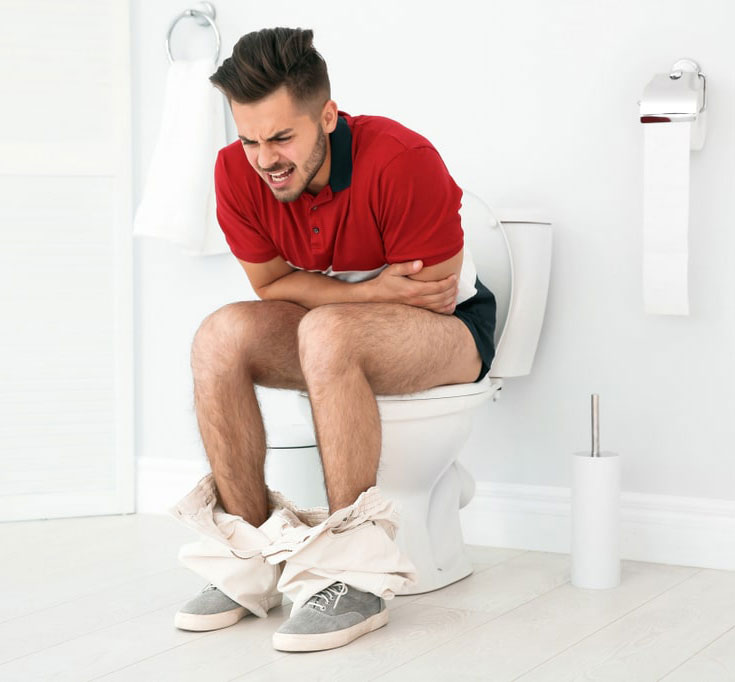For Best & Latest Treatment for Piles
Piles is another term for hemorrhoids. Hemorrhoids are collections of inflamed tissue in the anal canal. They contain blood vessels, support tissue, muscle, and elastic fibers.
What is Piles or Haemorrhoids?
Haemorrhoids are enlarged, bulging blood vessels in and about the anus and lower rectum. Popularly known as piles, 50% of the people above 50 years of age tend to develop haemorrhoids and it is uncommon below the age of 20 years.
Types of hemorrhoids
- Internal hemorrhoids are those which are inside the anal canal
- External hemorrhoids are the ones outside the anal canal
- Internoexternal hemorrhoids are those which are present both internally as well as externally
Grades of Haemorrhoids
- First Degree Hemorrhoids: The dilated veins remains entirely within the anal canal and do not bulge out of the anal opening.
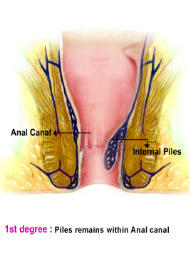
- Third Degree Hemorrhoids: The protrusion does not recede back on its own and has to be replaced by hand.
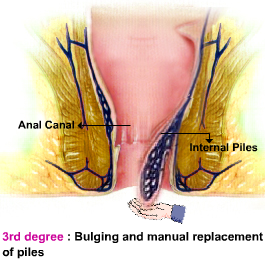
- Second Degree Hemorrhoids: Piles protrudes during the passage of stool but recede back on its own.
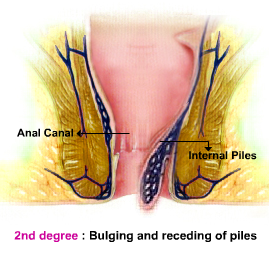
- Fourth Degree Hemorrhoids: Piles may protrude any time of the day and remains permanently protruded.
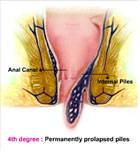
Symptoms of Haemorrhoids
- Patient with piles will usually have painless bleeding of fresh blood ( small quantity) immediately after passage of hard stools.
- The advanced cases will also have piles projecting out of the anus during the passage of stool which may reduce on its own or the patient themselves push it back after stools. Few advanced cases they may remain permanently out called external-internal piles.
- Anal Itching may be seen in some cases
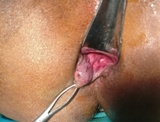
Pain occurs only if the piles get complicated in the form of thrombosed or gangrenous.
*Associated symptoms of weight loss, anemia, change in bowel habits, bloody diarrhoea, tenesmus, etc can be symptoms of serious diseases such as cancers or inflammatory bowel disease which needs prompt evaluation and treatment.
Diagnosis of Haemorrhoids
If you have above symptoms you may be likely to have piles however one must be cautious that not all bleeding per rectum would be only piles. Bleeding may be a symptom of something more serious like cancer too. Therefore it is necessary that you see a doctor preferably surgeon to diagnose.
After detail history taking Doctor may examine you completely including DIGITAL EXAMINATION and PROCTOSCOPY of the anal canal.
If needed he may advise you SIGMOIDOSCOPY or COLONOSCOPY depending upon your history and examination findings.
Complications of Haemorrhoids
- Profuse bleeding
- Thrombosis
- Strangulation
- Ulceration of haemorrhoids
- Pylephlebitis
- Suppuration
- Gangrene


Treatment of Haemorrhoids
The main aim is to relieve the symptoms, correct the precipitating factor and to reduce the risk of relapse.General lifestyle modification and dietary changes goes a long way in not only reducing the symptoms but preventing relapse too.


Self medication in the form of any tubes etc should be avoided lest they may create skin problems.

The definitive treatment for piles depends on their grades. For grade 1 and 2 office procedures (done by the doctor on OPD basis) such as rubber band ligation, sclerotherapy, infrared coagulation, etc are offered along with general measures suggested above.



However, if the office procedures fail then surgical procedures such as those offered for grade 3 and 4 are recommended. For grade 3 and 4 surgical procedures such as haemorrhoidectomy, stapler (MIPH) or Doppler-guided haemorrhoidal artery ligation OR laser hemorrhoidoplasty are the options available with each of them having its own pros and cons. The doctor usually discusses each case to case basis and arrive at a decision with the patients’ consent.
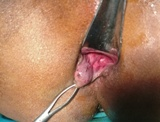




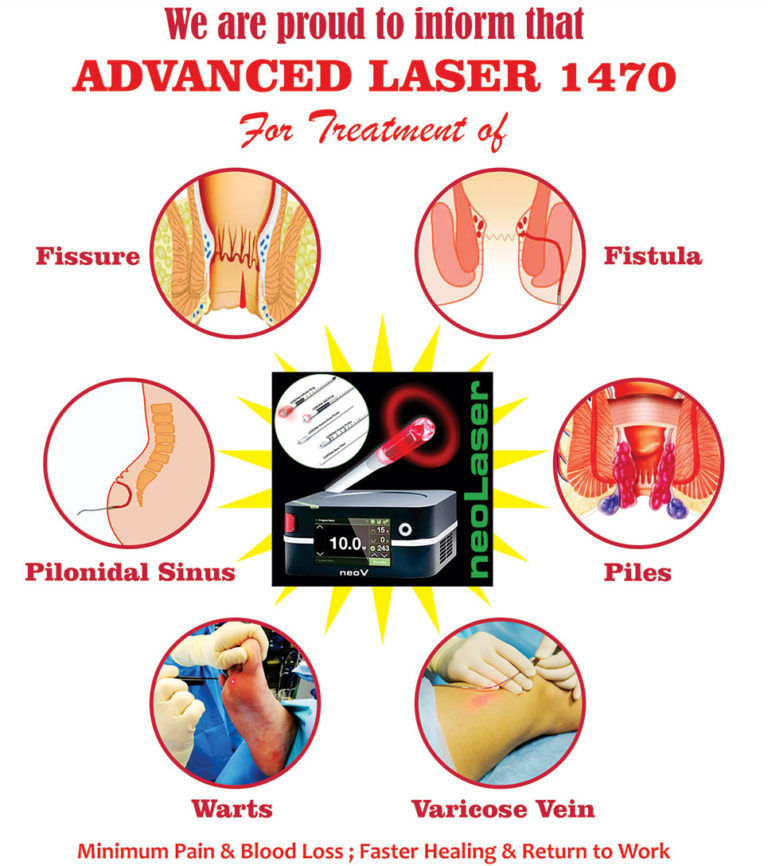
With access to
24 Hour
Emergency
Assistance
For Appointment Contact No: +91 98205 41923




